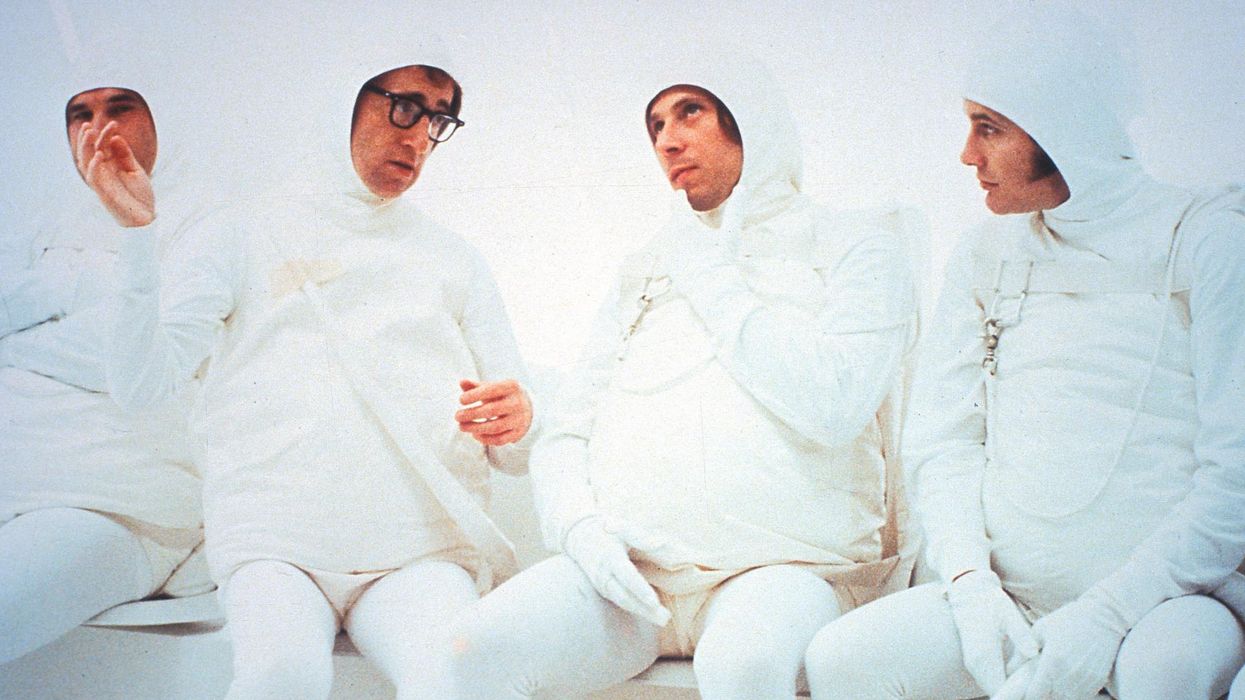
Woody Allen as a sperm in a scene from the 1972 film "Everything You Always Wanted to Know About Sex *But Were Afraid to Ask." (Photo by United Artists/Getty Images)

A 'lunar ark'
Scientists want to send more than 6 million genetic samples — including a bevy of sperm and ova — to the moon in a bid to create a "global insurance policy" in case of worldwide disaster.
According to a Friday report from Insider, scientists would like to build a "lunar ark" on the moon, jam-packed with 6.7 million genetic samples including sperm and ova.
The biological freight would be used to ensure the continuity of life against "natural disasters and other catastrophes" such as a "deadly epidemic, a super volcanic eruption, a large-scale nuclear war, widespread drought, or an asteroid."
"The ark would involve shooting the sperm and ova samples of 6.7 million species up to the moon via multiple payloads," the outlet noted. "The samples would then be stored in a vault beneath the surface of the moon, in a 'lunar pit,' where they could be kept secure."
The outlet said that a team of six scientists from the University of Arizona discussed the concept at the Institute of Electrical and Electronics Engineers Aerospace Conference.
"While this might seem like a suggestion straight out of science fiction, the scientists behind this proposal have calculated that sending the cryogenically frozen samples of sperm, eggs, spores, and seeds of some 6.7 million species to the relative safety of the moon might well be a feasible option," Insider noted.
Álvaro Díaz-Flores Caminero, a University of Arizona scientist working on the project, said that such an endeavor also brings mankind "closer to becoming a space civilization, and to a not-very-distant future where humankind will have bases on the Moon and Mars."
"Multidisciplinary projects are hard due to their complexity, but I think the same complexity is what makes them beautiful," Caminero added.
According to the New York Post, study author Jekan Thanga, who noted earth's "naturally ... volatile environment," said that specimens would be vulnerable on earth — and pointed to the moon as the best place to bury the samples in pits.
"The pits also are the perfect size for cell storage, according to Thanga," the Post noted. "They go down 80 to 100 meters under ground and 'provide ready-made shelter from the surface of the moon,' which endures 'major temperature swings,' as well as threats from meteorites and radiation."
On Thursday, the Science Times reported that the gene bank, which could also hold seed and spore samples, would be "doomsday proof."
"According to the researchers, carrying 50 samples from around 6.7 million organisms on Earth will require about 250 launches," the outlet said.